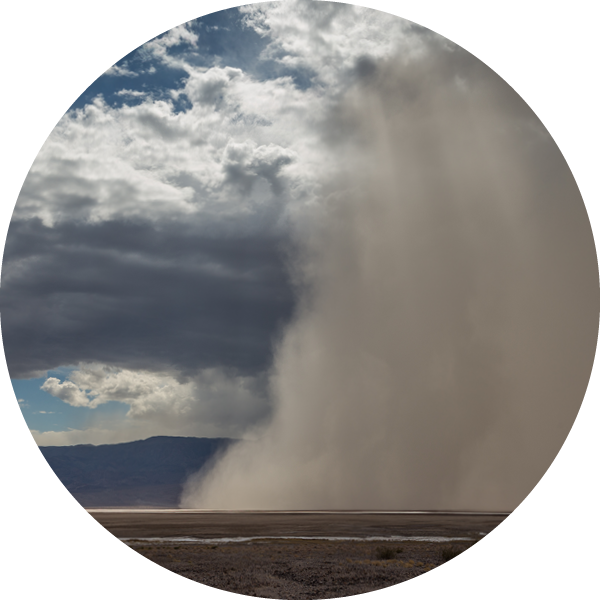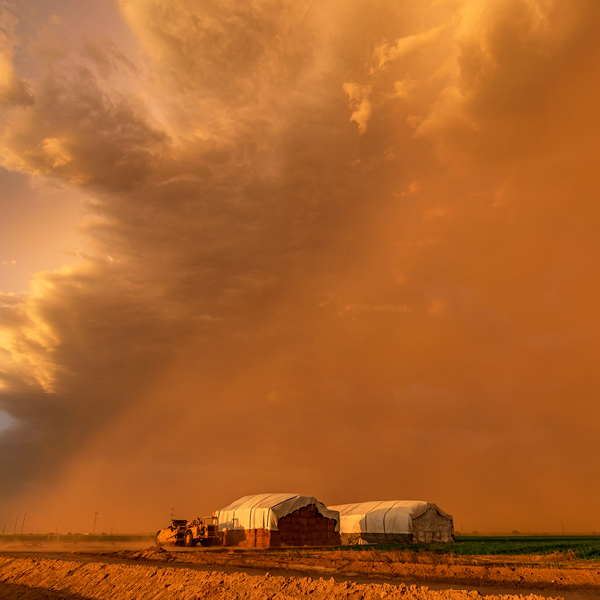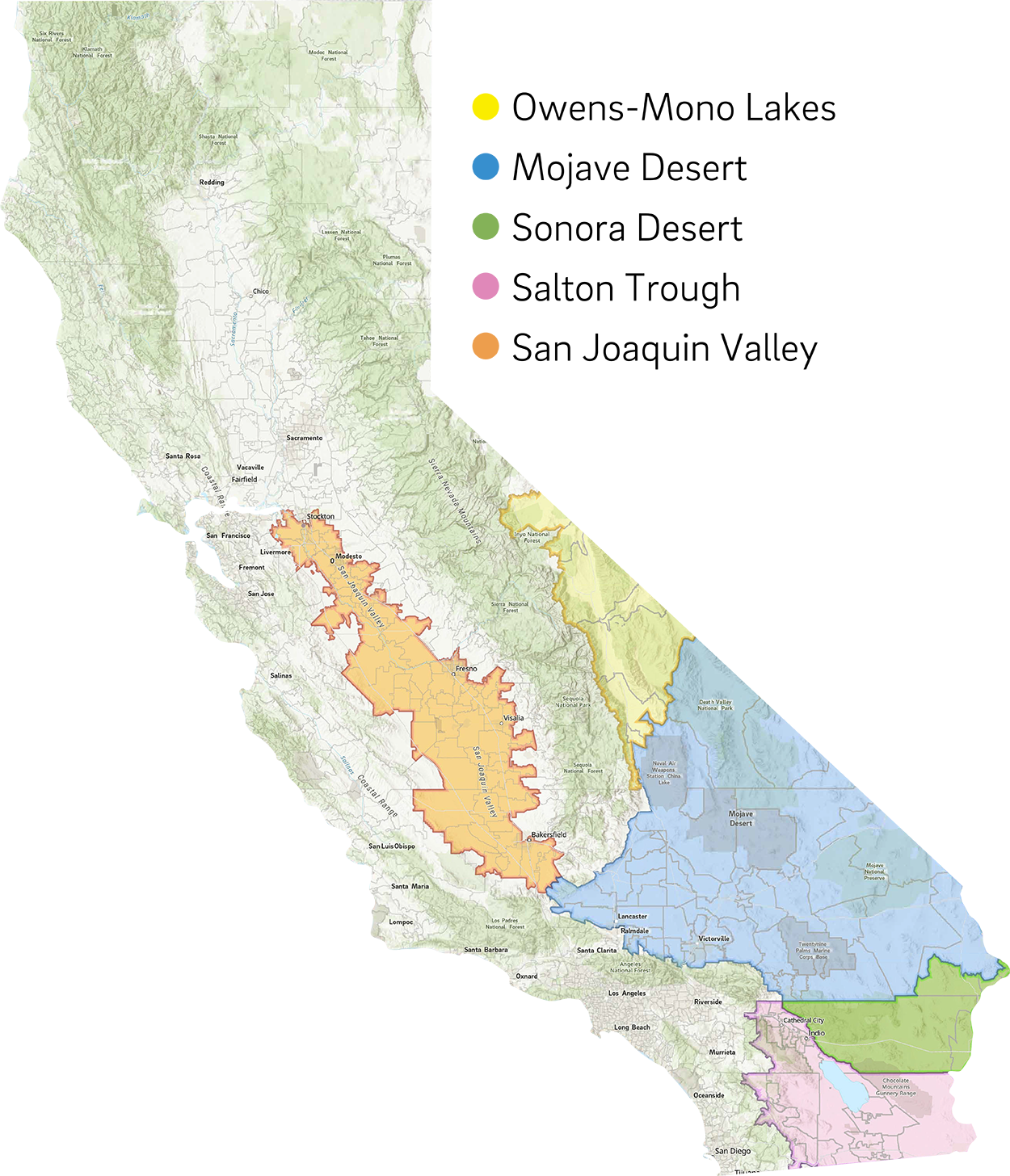


Dust storms are pervasive across much of inland California and have many adverse effects. Perhaps most notable are the health impacts associated with dust, which range from traffic accidents due to poor visibility, to respiratory disease caused by direct exposure. Unfortunately, these health impacts are disproportionately borne by vulnerable groups. However, dust storms also affect many other aspects of life in the state, including water resources, solar energy production, agricultural productivity, and weather and climate.
UC Dust is a new center developed with the goals of developing and implementing adaptation and mitigation strategies that address current and likely future dust storms in California. UC Dust is comprised of faculty, staff and students from 7 UCs who have expertise in the diverse disciplines relevant to dust storms, including the atmospheric, soil, health, and climate sciences, geography, ecology, hydrology, and environmental policy and justice.

When strong winds sweep across deserts, fallow fields, and other landscapes prone to erosion, they can lift tiny soil particles—commonly known as dust—into the atmosphere. This phenomenon, known as wind-blown erosion, escalates into a dust storm when it occurs on a sufficiently large and sustained scale. Dust storms are clearly visible to observers on the ground, and can grow in size and intensity to be visible from space. The map in Figure 1 shows the main locations in California where dust storms occur, broken up into five main regions, including Mono Lake through Owens Valley (yellow), the vast Mojave Desert (blue), the northwestern corner of the Sonoran Desert (green), the Salton Trough, which includes the Coachella and Imperial Valleys (pink), and the San Joaquin Valley at the center of the state (orange). These regions where dust storms occur encompass an area greater than 55,000 square miles and are home to nearly five million Californians. To put these numbers in perspective, this is an area and a population greater than nearly half of the states in the US.


Sources of Dust: A description of how dust storms are generated, the historical changes in dust, and the human activities that cause an increase in dust in the state’s air. A large fraction of the inland portions of the state are arid and consist of topographic depressions where fine sediment accumulates, and are thus potential locations for wind-blown dust. However, human activity has degraded many of these landscapes, resulting in an increase in dust emission beyond what would otherwise naturally occur. These human influences on the dust landscape include diversion of water for human use, off-road recreational activity, and drought conditions and wildfires associated with climate change.
Dust Impacts: The effects of dust storms on the state’s natural and human environment, ranging from desertification to the production of renewable energy to human health. There is a two-way linkage between dust emission and landscape degradation, with one reinforcing the other, leading to potentially irreversible shifts in California’s dryland ecosystems. The deposition of dust onto mountain snowpack creates additional stress on the state’s water resources which, when coupled to the loss of soil fertility associated with windblown soil erosion, can reduce agricultural productivity. The human health impacts of dust are broad, including respiratory and cardiovascular diseases, allergic conditions, fungal infections, and traffic accident injuries. These dust impacts also have a negative effect on the economy of California.
Future Changes: Climate change and other human-caused changes to the landscape are likely to increase dust storms in the future. Global warming is increasing the aridity of drylands globally, but is also resulting in more intense and sporadic rainfall. These climate-induced changes have already occurred here in California, and are expected to increase future dust emission across the state. Other projected changes to the landscape, including from activities like construction and shifts in land and water management policy, may also result in future increases in dust emission and concentrations.
Strategic Solutions and Needs: Adaptation and mitigation strategies to minimize dust impacts. While a small number of costly dust source mitigation strategies have been implemented in the state, little investment has been made in the area of dust impacts mitigation. To best address current and likely future adverse impacts from exposure to dust, there is a need to 1) make key measurements of the environment and use these to develop a dust forecasting and early warning capacity, 2) generate effort integration among affected communities, researchers, and state agencies, and 3) and dedicate consistent and sustainable resource support for mitigation and adaptation work.


